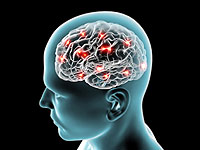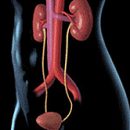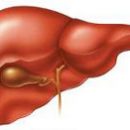From this article you will learn about the reasons, manifestations, diagnosis and modern approach to the treatment of encephalopathy.
Content
Distinguish both congenital and acquired encephalopathy. Congenital forms involve the occurrence of the disease in the perinatal period, starting at 28 week of pregnancy and ending after the first week of the child's life.
- Mother's disease during pregnancy;
- complicated pregnancy;
- premature childbirth;
- The big mass of the fetus body;
- campus cord;
- Difficult disclosure of generic paths;
- Neuroinfection and other.
A professional in this case can be diagnosed with Encephalopathy in the first month of the child's life, as well as to recommend the necessary medical measures in order to reduce or eliminate the risk of complications, which include both minimal brain dysfunctions and serious violations (epilepsy, children's cerebral paralysis and etc.).
 Acquired encephalopathy can appear at a later age as the consequence of infectious disease, intoxication, various structural and functional changes in the brain vessels, its tumors, injuries and T.D. As a rule, the disease does not differ in pronounced symptomatics, however, a number of manifestations can be distinguished, indirectly indicating the presence of a pathological process:
Acquired encephalopathy can appear at a later age as the consequence of infectious disease, intoxication, various structural and functional changes in the brain vessels, its tumors, injuries and T.D. As a rule, the disease does not differ in pronounced symptomatics, however, a number of manifestations can be distinguished, indirectly indicating the presence of a pathological process:
- Excessive irritability;
- fast fatiguability;
- insomnia;
- headache;
- Memory disorders;
- intelligence disorders;
- loss of control over emotional manifestations;
- unmotivated aggression;
- asthenia.
If the cause of encephalopathy served as poisoning (alcohol or other toxic substances), the disease can be characterized by both acute flow, with the occurrence of specific psychosis and chronic progressive destruction. In any case, regardless of etiology and forms, the disease requires professional advice and appointment of an adequate specific course of treatment.
Treatment of encephalopathy due to the seriousness and danger of this disease requires an exclusively professional approach and does not allow independent attempts to combat pathological process.
Timely appeal to a specialist for the treatment of encephalopathy contributes to the identification of structural and functional changes in the brain in the early stages, for which the following diagnostic studies are used:
- echoorencephalography;
- neurosonography;
- electroencephalography;
- CT scan;
- Positron-emission tomography.
All events should be appointed by a professional and require its observation in order to track the rate of recovery or in a timely manner to adjust the course of treatment of encephalopathy in accordance with the individual characteristics of the body. Do not postpone the visit to the doctor and expose yourself an excessive danger - otherwise the risk of developing serious complications increases significantly, worsening the quality of life and causing various structural and functional changes.









